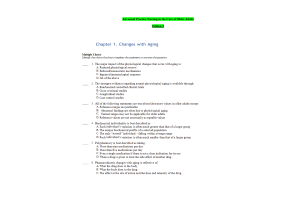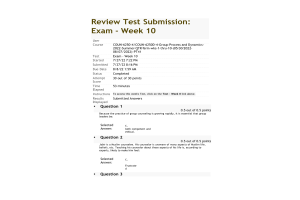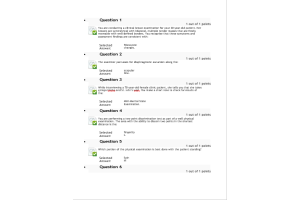PMHNP 6635 Midterm Exam (100% Correct)
- $55.00
- Question: Select the neurotransmitter involved in obsessive-compulsive disorder (OCD) in children and adolescents based on the common comorbidity of tic disorders.
- Question: Select the class of drugs most effective in treating pain disorder
- Question: Select the most commonly occurring eating disorder.
- Question: Select the disorder in which inflicting injury to self or others is common.
- Question: Select two imaging methods used to study anxiety disorders.
- Question: Select the two factors that do not cause dissociative amnesia.
- Question: Select the correct epidemiologic fact about major depression in children and adolescents.
- Question: Select the brain region that is most implicated in the function of memory.
- Question: Select the greatest impediment to treating anorexia nervosa patients.
- Question: Select the most common sleep disorder.
- Question: Select the percentage of untreated PTSD patients who recover after one year.
- Question: Select the factor that is required to cause PTSD from a stressor.
- Question: Select two causes of dissociative amnesia.
- Question: Select the population in which rumination disorder occurs most frequently.
- Question: Select the symptom that is least associated with manic and hypomanic episodes.
- Question: Select the two comorbid disorders with which Pica occurs most commonly.
- Question: Select the third most commonly reported psychiatric symptom.
- Question: Select the characteristic in long sleepers (more than 9 hours) that is absent in short sleepers (less than 6 hours).
- Question: Select the two most common peripheral symptoms of anxiety.
- Question: Select the two methods to treat dissociative amnesia.
- Question: Select the theorist who is credited with establishing the area of psychosomatic medicine.
- Question: Select the disorder in children and adolescents that is described by depressed or irritable mood for most of the day for a majority of days in at least one year.
- Question: Select the type of dissociative amnesia described by inability to recall any events in a particular lifespan period.
- Question: Select the frequency range of heritability of bipolar disorder.
- Question: Select the two symptoms that result from prolonged sleep deprivation.
- Question: Select the most likely stressor to cause an adjustment disorder.
- Question: Select the medical condition that must be excluded as a cause of somatic symptom disorder or hypochondriasis.
- Question: Select the function that is most affected by conversion disorder.
- Question: Select the therapy for insomnia that can be effective at up to three years after discontinuation.
- Select the mental health model that is most associated with
- Question: human interpersonal connection.
- Question: Select the behavior that best describes early onset bipolar disorder in children and adolescents.
- Question: Select the two medical conditions in which derealization and depersonalization are common.
- Question: Select the age stage of life in which identity crisis typically emerges.
- Question: Select the two most important factors that guide the decision to prescribe benzodiazepines to treat generalized anxiety.
- Question: Select age after which encopresis may be correctly diagnosed.
- Question: Select the mg/dL blood alcohol level range that is associated with causing impaired judgment and coordination.
- Question: Select the minimum treatment time to assess the effectiveness of antidepressant drug therapy.
- Question: Select the exposure to violence that is excluded as a DSM-5 diagnostic criterion for PTSD in children and adolescents.
- Question: Select the psychiatric disorder for which drug and nondrug treatments are least effective.
- Question: Select the life stage at which emotional and social behavior begin.
- Question: Select two events that are excluded as causes of dissociative trance disorder.
- Question: Select the nondrug therapy with the greatest evidence of effectiveness in treating major depressive disorder.
- Question: Select the theorist who developed the eight stages of psychosocial life cycle.
- Question: Select the two common characteristics of illness anxiety disorder.
- Question: Select the serum assessment that is required when prescribing drugs to treat psychiatric disorders in psychosomatic patients.
- Question: Select the alternate name for persistent depressive disorder.
- Question: Select the serum substance that should be measured to aid the diagnosis of restless leg syndrome.
- Question: Select the scientist who is most associated with the development of learning theory.
- Question: Select the event most associated with the occurrence of dissociative fugue.
- Question: Select the drug proven most effective in treating PTSD.
- Question: Select the percentage that most accurately represents the rate of heritability of major depression.
- Question: Select two neurotransmitters associated with anxiety.
- Question: Select the drug with the most rapid onset of action to treat acute mania
- Question: Select the most likely stressor to cause an adjustment disorder.
- Question: Select the mental health disorder that commonly coexists with generalized anxiety disorder.
- Question: Select the percentage range of correlation between obesity and psychiatric disorders.
- Question: Select the obsessive-compulsive disorder for which a patient is likely to initially seek help from a non-psychiatric provider.
- Question: Select two types of theories that have contributed to causes of anxiety.
- Question: Select the age group in which adjustment disorders occur most frequently.
- Question: Select the drug used to treat bipolar disorder that may cause hypothyroidism.
- Question: Select the psychiatric disorder that occurs most commonly in patients hospitalized for medical problems and surgery.
- Question: Select the public performance that is most associated with social anxiety in children.
- Question: Select the anxiety disorder that emerges in ages 9 to 18 months.
- Question: Select the neurodevelopmental disorder typically diagnosed in childhood.
- Question: Select the maximum time period recommended for treatment of insomnia with hypnotic drugs
- Question: Select the neurotransmitter that is most genetically involved in childhood and adolescent depression.
- Question: Select the antidepressant drug that is most likely to cause death when taken in an overdose.
- Question: Select the antidepressant drug most likely to cause sexual dysfunction.
- Question: Select the hormone or neurotransmitter that is involved in regulating the 24-hour circadian sleep-wake cycle.
- Question: Select the cognitive function category in a mental status examination that is represented by the question, “Starting at 3 A.M., count back the time 2 hours at a time.”
- Question: Select the therapeutic plasma concentration range for lithium in mEq/L.
- Question: Select the rating scale used to assess children and adolescents for ADHD.
- Question: Select the primary cause of reactive attachment disorder in children.
- Question: Select the rating scale used to assess significant alcohol problem.
- Question: Select the criterion that differentiates Bipolar II from Bipolar I disorder.
- Question: Select the largest percentage prevalence of psychiatric disorders in patients hospitalized for medical conditions.
- Question: Select the rating scale used to assess response to antidepressant drug therapy.
- Question: Select the treatment of choice for identity crisis.
- Question: Select the most exclusive feature rapid eye movement (REM) sleep.
- Question: Select the DSM-5 disorder formerly called multiple personality disorder.
- Question: Select the two primary psychometric properties of psychiatric rating scales.
- Question: Select the percent of OCD patients who also have depressive symptoms.
- Question: Select the potential adverse effect of SSRI antidepressant drugs approved to treat children with major depressive disorder.
- Question: Select the two complications in diagnosing patients with anorexia nervosa.
- Question: Select the two types of symptom patterns common to OCD patients.
- Question: Select the rating scale used to screen for Alzheimer’s disease and other dementias.
- Question: Select the most effective treatment for social anxiety disorder in children.
- Question: Select the two diagnostic criteria of somatic symptom disorder or hypochondriasis.
- Question: Select the time from occurrence of the stressor in which symptoms must appear to diagnose an adjustment disorder.
- Question: Select the two characteristics of impulses that are usually absent from compulsions.
- Question: Select the period of time after most recent use that THC (marijuana) can be detected in urine specimens.
- Question: Select the delay of time between exposure to the stressor and onset of PYSD symptoms.
- Question: Select the nondrug therapy approved for use in patients who have failed to achieve satisfactory improvement with correctly prescribed antidepressant drugs.
- Question: Select a provider’s most important knowledge area essential to a successful mental health interview of a child.
- Question: Select the drug that has been effective in treating social anxiety in children.
- Question: Select the youngest age range at which alarm therapy is effective to treat enuresis.
- Question: Select the most important mediator of the stress response:
- Question: Select the symptom that is most likely improve early in the drug treatment of major depression.
- Question: Select the criteria in DSM-5 to diagnose a child with major depressive disorder.
- Question: Select two signs and symptoms of bulimia nervosa.
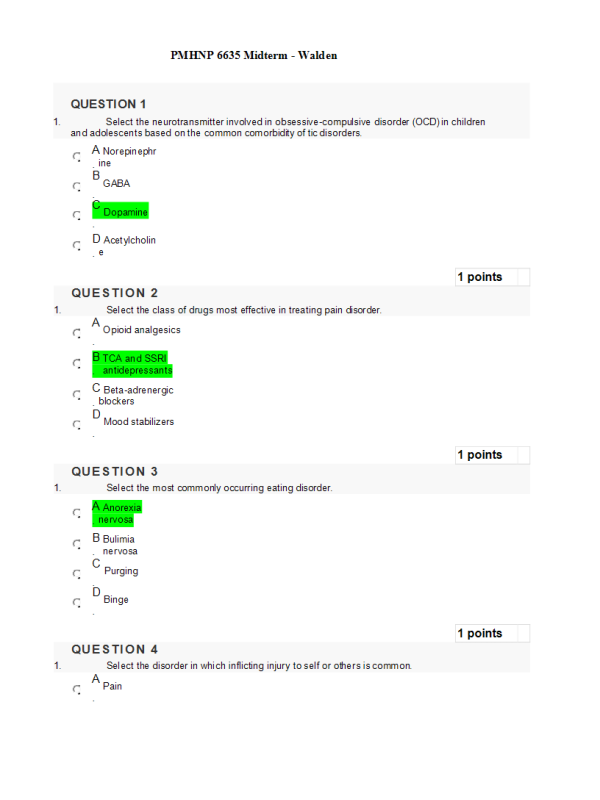
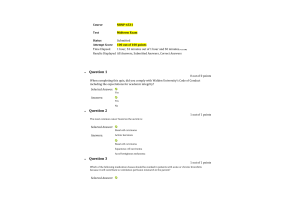
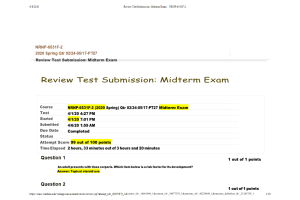
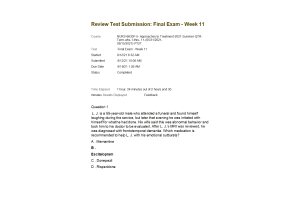
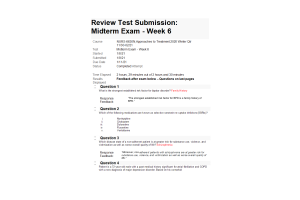
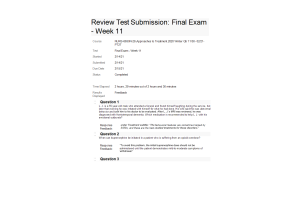
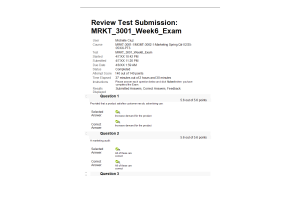
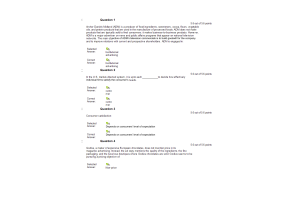
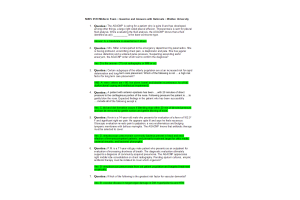
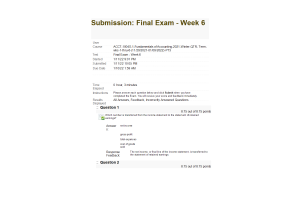
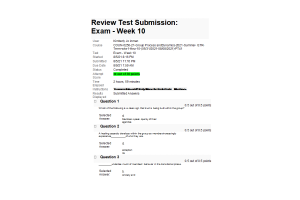
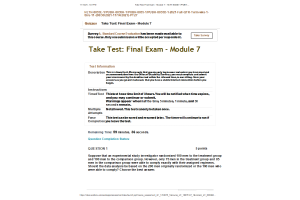
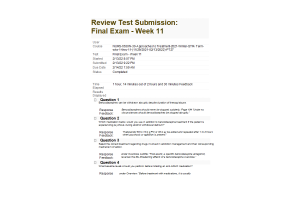
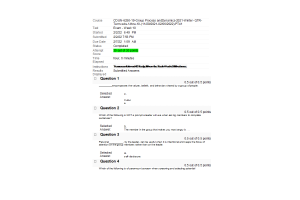
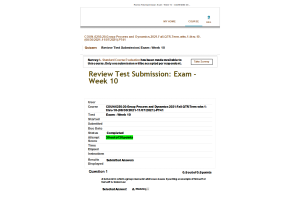

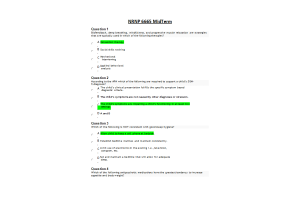
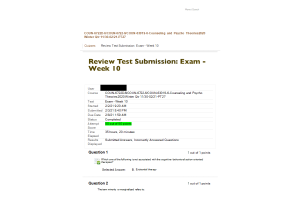
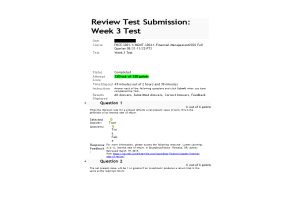
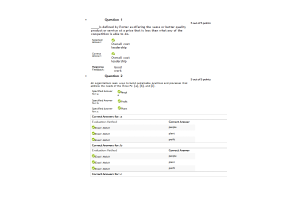
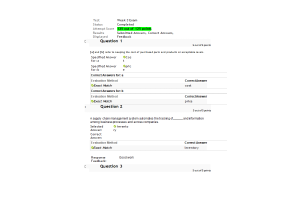
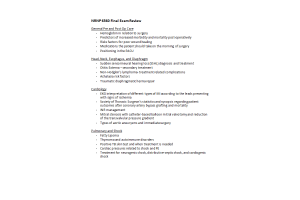
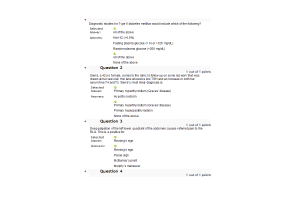
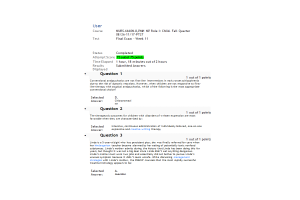
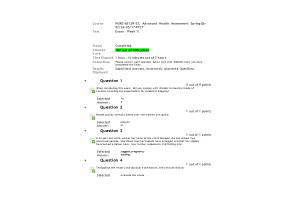
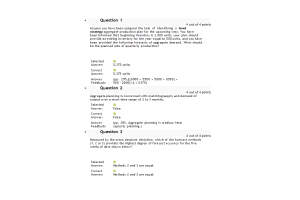
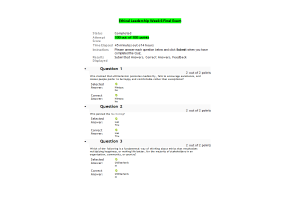
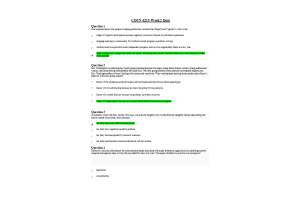
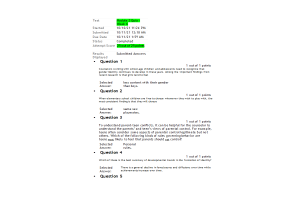
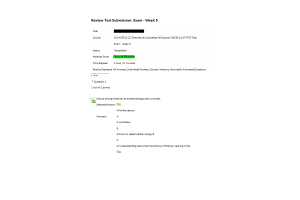
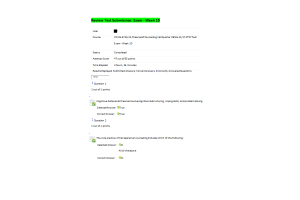
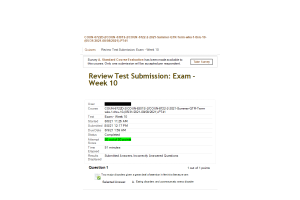
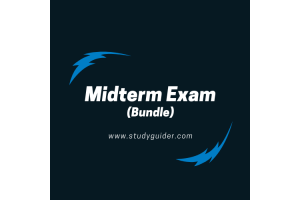
-300x200.png)
-300x200.png)
-300x200.png)
-300x200.png)
-300x200.png)
-300x200.png)
